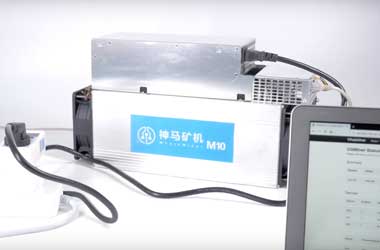 Ripple, the blockchain startup that built the XRP cryptocurrency, and R3 Corda, the blockchain consortium founded by David Rutter, have reached an out-of-court settlement over the 2016 agreement that gave R3 the right to purchase 5 billion XRP tokens based on a price of $0.0085 cent per XRP. When both parties signed the contract, the price of XRP was only around a cent. However, the token appreciated considerably in 2017 and 2018, with the current value of 5 billion XRP tokens equaling roughly $1.3 billion.
Ripple, the blockchain startup that built the XRP cryptocurrency, and R3 Corda, the blockchain consortium founded by David Rutter, have reached an out-of-court settlement over the 2016 agreement that gave R3 the right to purchase 5 billion XRP tokens based on a price of $0.0085 cent per XRP. When both parties signed the contract, the price of XRP was only around a cent. However, the token appreciated considerably in 2017 and 2018, with the current value of 5 billion XRP tokens equaling roughly $1.3 billion.
With this out-of-court settlement, the lawsuits between R3 and Ripple have come to an official close. Commenting on the out-of-court settlement, Ripple said
“R3 HoldCo LLC, R3 LLC, Ripple Labs Inc. and XRP II, LLC announce that they have reached a settlement of all outstanding litigation between the parties. The terms of the agreement will remain confidential and both sides look forward to putting these disputes behind them.”
Back in 2016, Ripple and R3 entered into an options agreement that gave the former access to the Rutter’s blockchain consortium of several large banks such as Goldman Sachs and JP Morgan. Ripple reciprocated by offering 5 billion XRP tokens at a floor price of $0.0085. Furthermore, the contract allowed R3 to exercise the options at any at any time before 2020. Additionally, Ripple agreed to share 15% of its future banking partnership revenue with R3.
However, in July 2017, R3 alleged that Ripple unilaterally ceased the contract without any kind of explanations. R3 also filed a lawsuit against Ripple, requesting the court to reinstate the cancelled contract. A few months later, Ripple filed a counter case blaming R3 of entering into the agreement with bad faith and using it to create a similar blockchain product. The lawsuit also alleged that R3 misled Ripple about the involvement of Goldman Sachs and JP Morgan.
Notably, R3’s Corda platform and Ripple’s xRapid and xCurrent platforms are aimed at banks. The products permit cross-border money transfer at incredible speed, while reducing the transmission costs.








